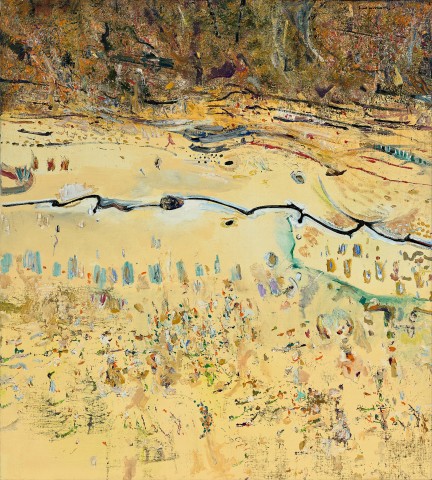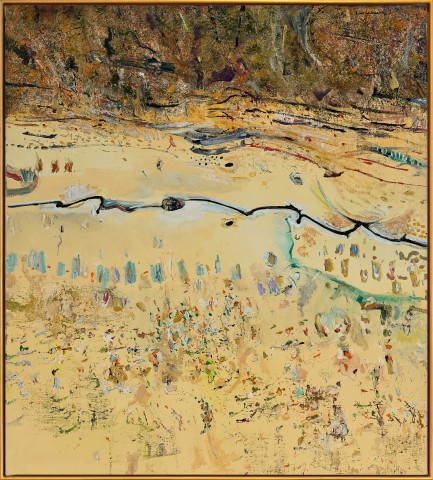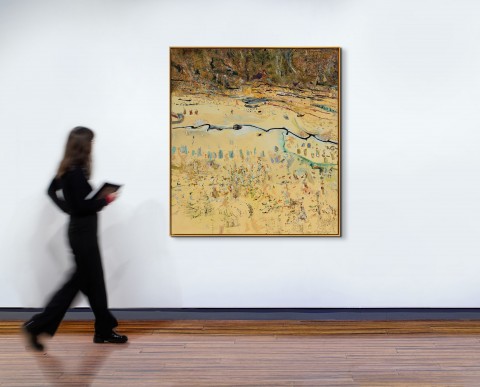LANDSCAPE WITH CREEK BED, 1976 - 77
FRED WILLIAMS
oil on canvas
153.0 x 137.5 cm
signed upper right: Fred Williams.
bears inscription on label attached to stretcher bar verso: TWO PARTS / 1. / FRED WILLIAMS / "LANDSCAPE WITH CREEK BED"
Rudy Komon Art Gallery, Sydney
Joan Clemenger AO and Peter Clemenger AO, Melbourne, acquired from the above in April 1978
Fred Williams, Undercroft Gallery, University of Western Australia, Perth, 25 February – 12 March 1978; Contemporary Art Society Gallery, Adelaide, 15 March – 8 April 1978 and Rudy Komon Art Gallery, Sydney, 29 April – 7 May 1978, cat. 10
Landscape with Creek Bed, 1976, oil on canvas, 153.0 x 137.5 cm, in the Janet Holmes à Court Collection, illus. in Hart, D., Fred Williams: Infinite Horizons, National Gallery of Australia, Canberra, 2011, p. 146
We are grateful to Lyn Williams for her assistance with this catalogue entry.
Fred Williams Lot 3 01 cmyk.jpg
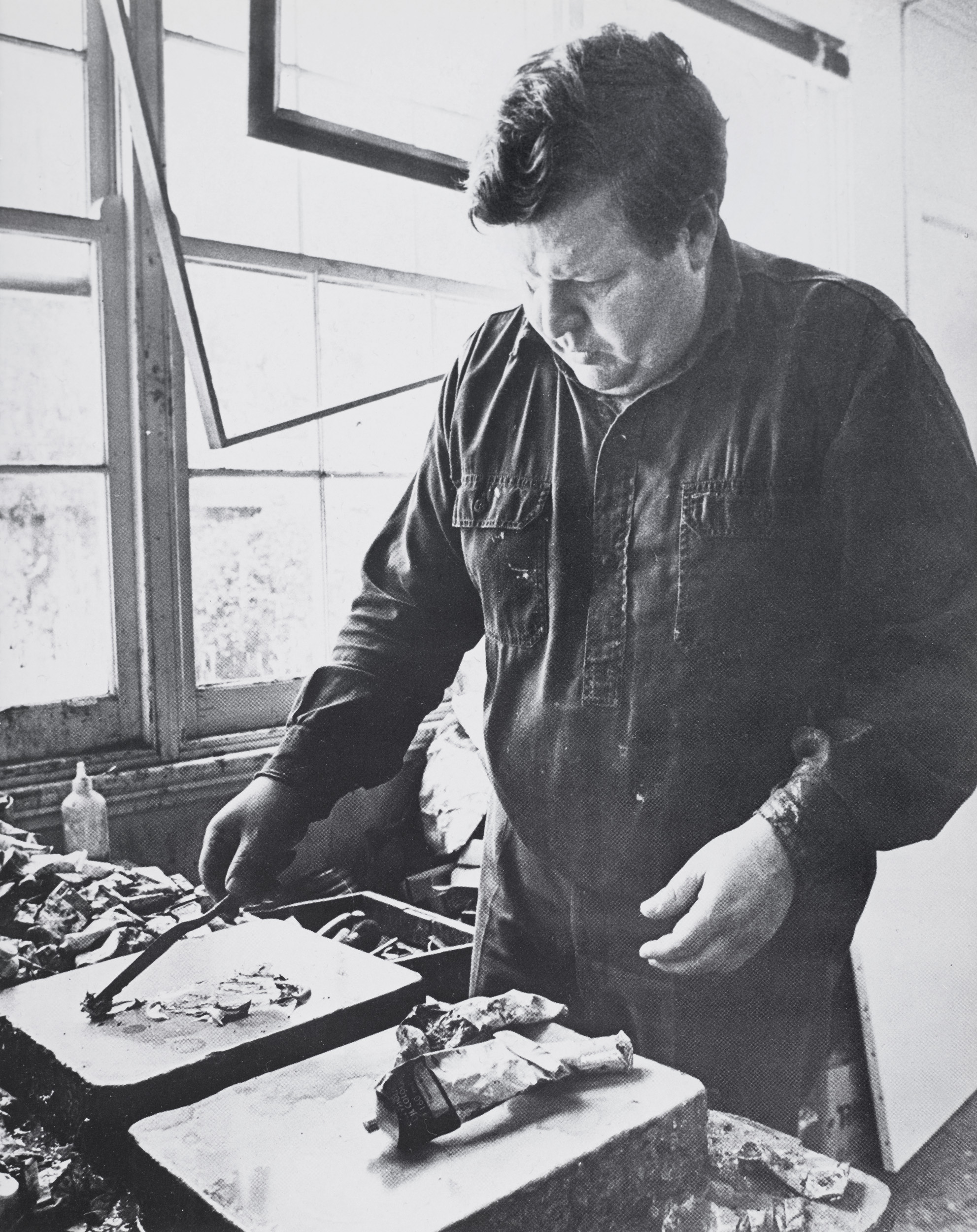
An invitation in 1975 to mount a solo exhibition of gouaches at the Museum of Modern Art in New York marked the beginning of an intensely productive period in Fred Williams’ career. He was the first Australian artist to be honoured in this way and the exhibition, which opened in March 1977, acknowledged the significance of his art and its unique vision of the landscape within a national context – both to audiences who were familiar with the country his paintings described, and beyond. Introducing the exhibition, the Director of MoMA’s Department of Drawings, William S. Lieberman, wrote: ‘Fred Williams knows Australia. He is not an artist who would disdain a gum tree. He is not a foreigner seeking to impose a natural paradise on some strange, exotic land. He is, however, a romantic artist and his approach to landscape is narrative. His images may at first seem abstract, but they in fact describe actual times and places… Fred Williams’s colours are those of the continent itself… Fred Williams’s vision is authentic.’1
In addition to international travel and an extensive program of exhibitions at home – including six solo shows presented across five states between 1975 – 78 – the second half of the 1970s saw the development of four major painting series. Continuing his well-honed practice of working directly from the landscape, Williams focussed in on particular geographical forms: pools of water (Kew Billabong); mountains (Kosciusko and Guthega); gorges (Werribee) and waterfalls.2 Many of the sites he painted were in close proximity to his home, and the destinations of day trips made in the company of friends and fellow artists were frequently found in Williams’ copy of the newly-published edition of the Physiography of Victoria.3
dh230614 Gallery B&W.jpg
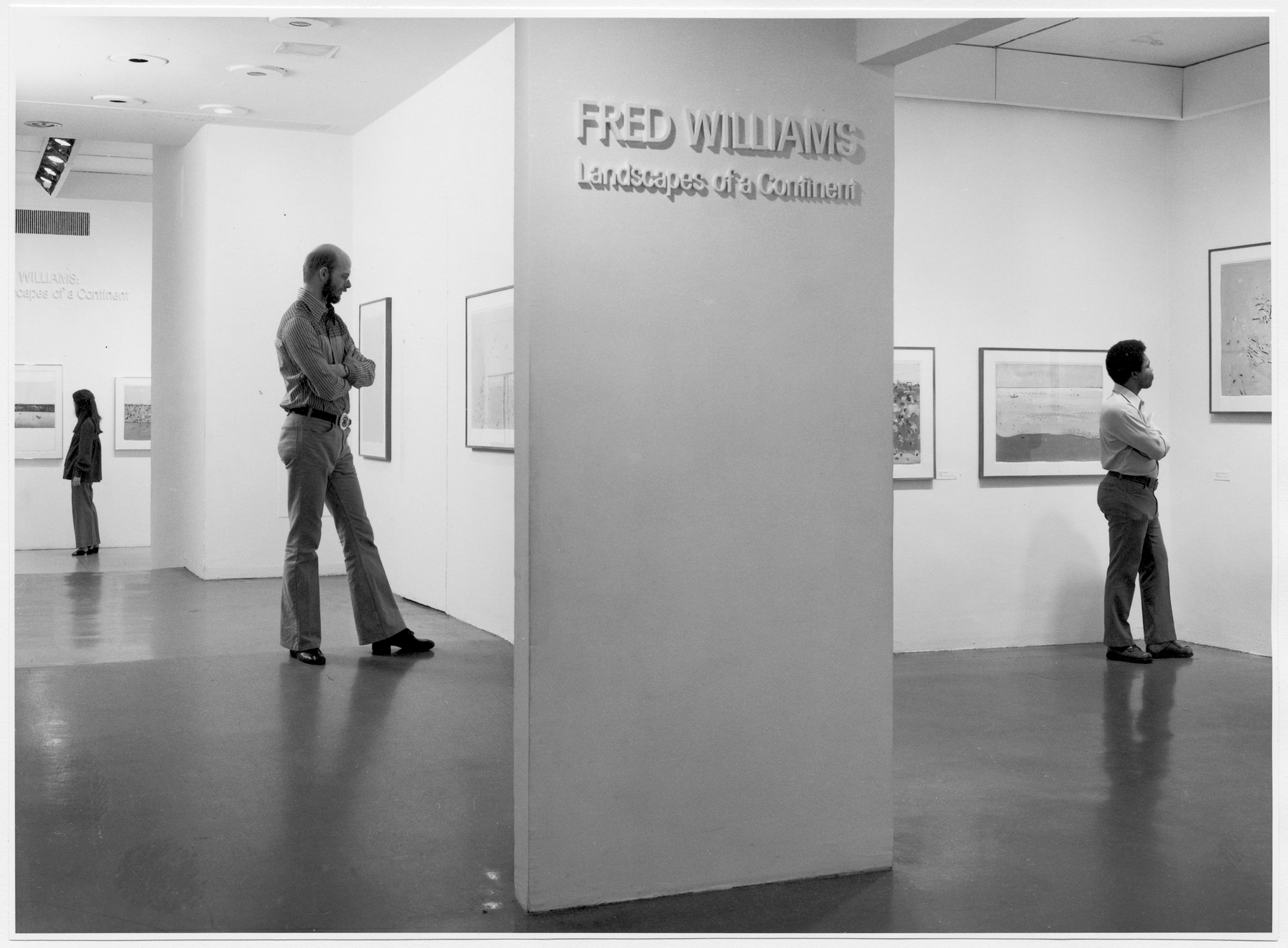
The series of gorge paintings began in late 1975 following two sketching excursions to Werribee, a short distance south-west of Melbourne. The drama and varied features of the landscape obviously appealed to Williams, who returned early the following year, making a further eight visits to the area in just over two months, painting oil sketches as well as taking photographs, which he used as aide-mémoires. He worked in a different location each time – from Picnic Point, which offered a broad view over the cliffs to the dry creek bed and surrounding bush below, to Kelly’s Creek, where the perspective was closer and more intimate, noting in his diary, ‘These last three or four months have been the driest in fifty three years? so it has been a great opportunity to be doing the “Gorge” – visually it could not be seen under better conditions.’4 Williams also wrote, ‘It is quite fascinating to think of the You Yangs looking like a saw-tooth – & just a few miles away the “Gorge” doing the same thing in reverse.’5 This recognition of the connection between the geography of Werribee Gorge and the You Yangs – the subject of an important series of paintings produced the previous decade – provides an insight into the depth of Williams’ understanding and careful observation of the landscapes in which he worked.
220614 - R Image 1 Dry Creek Bed_cmyk.jpg
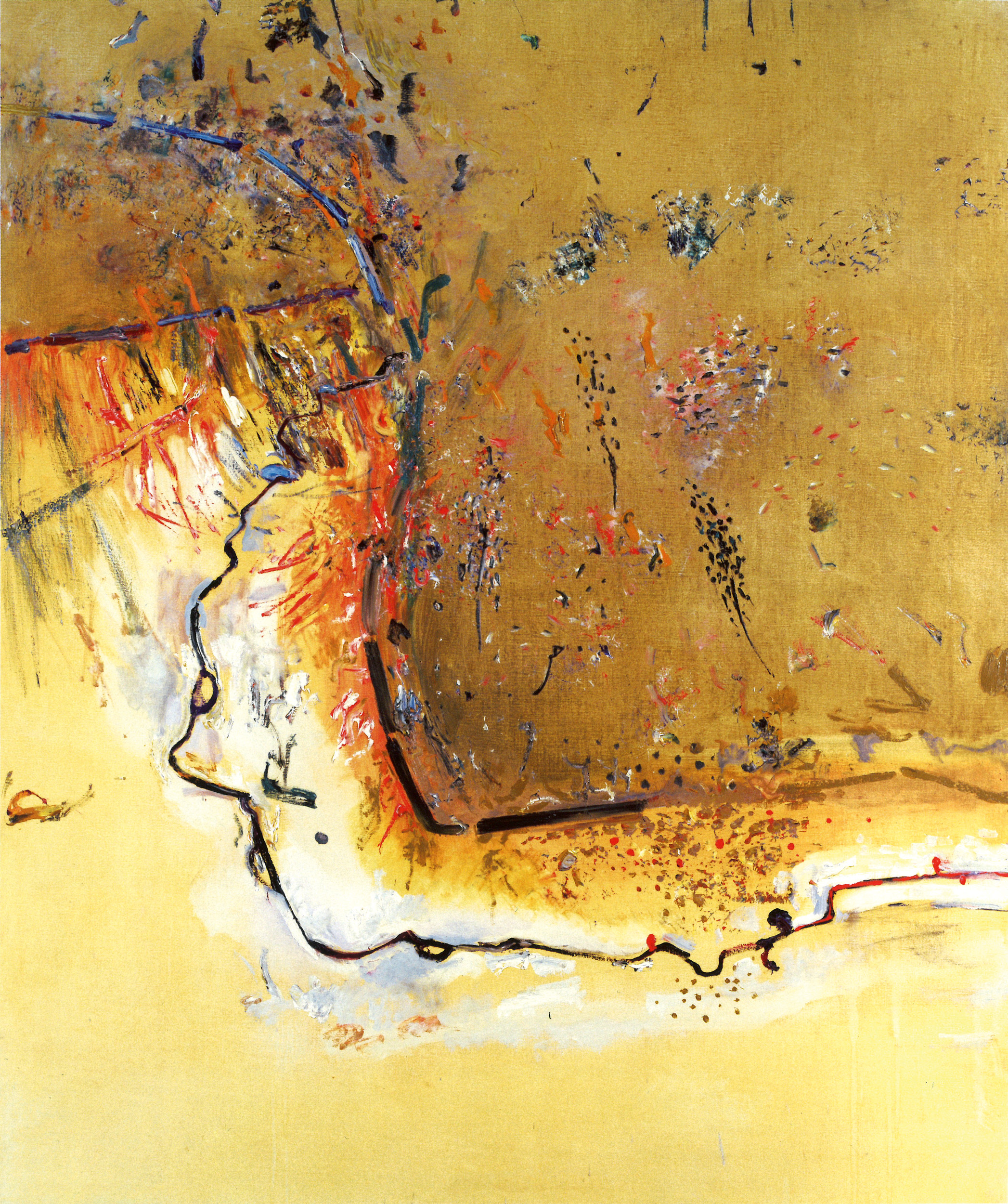
In making these paintings, Williams solidified the practice of beginning studio paintings soon after a sketching trip, while the visual and physical memory of the experience was still strong, and there was now little difference between what he termed the ‘outside’ paintings and the ‘inside’ works. Recording his excitement about this new aspect of the creative process, he wrote, ‘this is something of a milestone for me – to paint the sketch on the spot and then paint the picture!’6 Landscape with Creek Bed, 1976 – 77 is based on a painting Williams made at Kelly’s Creek in April 1976. He began working on it in the studio just three months later, and it was finished in mid-1977. One of the consequences of this way of working is an immediacy in the application of paint which echoes marks made directly in front of the motif, as the hand directs the brush to record an impression of what the eye is seeing, capturing both the appearance and the feeling of the landscape. From all-over compositions like The River, Werribee Gorge, 1977 (Art Gallery of New South Wales) in which the river, seen from above, meanders through a densely treed area, to more sparse images like Dry Creek Bed, Werribee Gorge I, 1977 (Tate Gallery, London), it is the diversity of brushstrokes and a certain lightness of touch that prevails. When Landscape with Creek Bed was exhibited in a solo show at the Rudy Komon Gallery, Sydney, in April – May 1978, it was listed and displayed as a two-part work, although each canvas was sold separately. The other, closely related painting is in the Janet Holmes à Court Collection.7
Landscape with Creek Bed presents a veritable catalogue of painterly forms which are applied on top of a pale sandy ground. A black line defines the irregular path of the creek, dancing across the canvas and establishing a syncopated pictorial rhythm that reverberates throughout the painting. Thick vegetation across the top is described by a dense, richly textured band of loose, gestural brushstrokes interspersed with areas of paint that have been dabbed onto the canvas by splayed and flattened bristles of the brush. The composition opens up on either side of the creek with sparsely painted lines and characteristic dots, dashes and daubs defining the changing terrain and other observed features of the view. The bottom section of the painting is classic Williams – a series of delicate and yet energetic marks which, in their varied technique and colour, convincingly depict an open, sparsely vegetated landscape. His delight in the subject is palpable, as is the confidence of his gesture and mastery of his medium. Williams was a consummate colourist and while the first impression of this painting is one of muted landscape tones, closer prolonged inspection reveals glimpses of brilliant colour – green, mauve and rich reds – that are such a distinctive feature of his work, and indeed, so typical of the experience of being in the Australian bush.
220614 Wiliams The River_cmyk.jpg
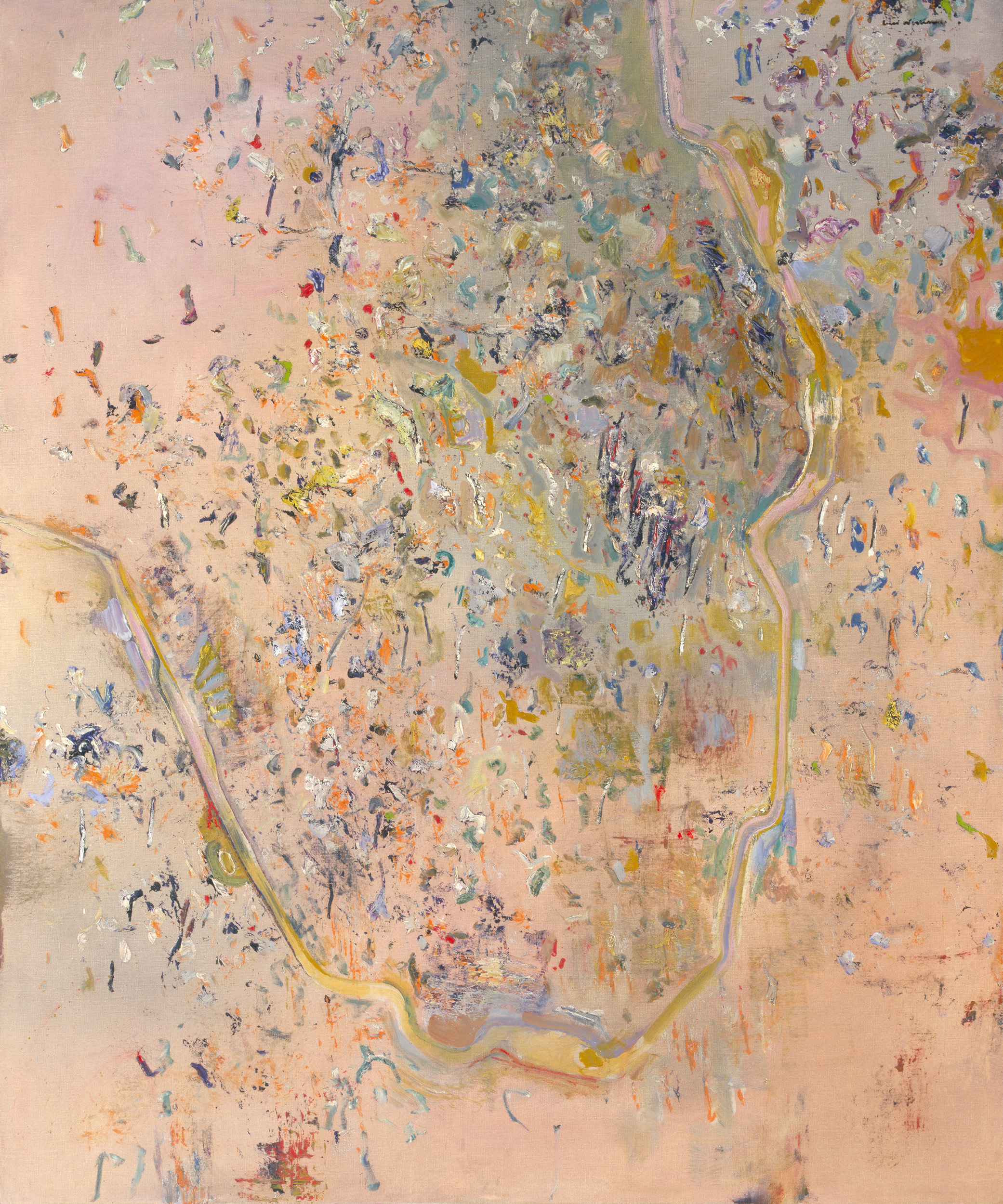
The Werribee Gorge paintings reveal the hand and imagination of a mature artist who is confident in his abilities and yet not content to rest on the successes of the past. Exploring new territory, both physically and artistically, Williams skilfully describes a specific location while at the time presenting a symbolic representation of the landscape which is imbued with a profound depth and emotional resonance. As Patrick McCaughey explained, ‘Each image forms a metaphor to focus the landscape and give it a new expressive power and purpose. Together, the series forms a new consciousness in Williams’s art… [reflecting] how much Williams wanted to combine inner compulsion and structural design and let them flow and be seen to flow from each other.’8
1. Lieberman, W. S., Fred Williams – Landscapes of a Continent, Museum of Modern Art, New York, 1977, n.p.
2. See McCaughey, P., Fred Williams 1927 - 1982, Murdoch Books, Sydney, revised edition, 1996, chapter 8
3. Ibid., p. 290
4. Fred Williams Diary, 21 April 1976 cited in Mollison, J., A Singular Vision: The Art of Fred Williams, Australian National Gallery & Oxford University Press, Canberra, 1989, p. 205
5. Fred Williams Diary, 30 March 1976, ibid.
6. Fred Williams Diary, 30 April 1976 cited in Hart, D., Fred Williams: Infinite Horizons, National Gallery of Australia, Canberra, 2011, p. 148
7. See Hart, ibid., pp. 145 – 6
8. McCaughey, op.cit., p. 284
KIRSTY GRANT
